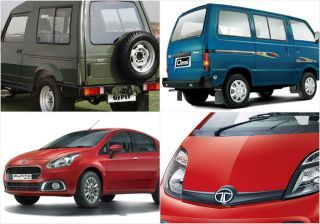Tata Motors Planning to Introduce 'Low Cost' Composite Cars in India
Published On Feb 23, 2013 01:31 PM By Vikas
- Write a comment
The Indian auto major, Tata Motors that already has a low cost-car in the form of Nano, is now working on other low-cost composite cars to complement Nano, informs two people close to the project. However nothing on the launch has been disclosed by the company as of now, the company might wait for the business to be stabilised first and then launch such a car. The company which is also working a premium small car based on a refurbished Indica platform, might come earlier to the said composite cars.

If we look at the composite vehicles sold globally, they are made of carbon fibre, thus are priced very high. Here in India, Tata might use a material called poly-diallyl-phthalate (PDP) to built the cars, so to keep the prices low, however it would still cost more than the Nano. The advantage that the composite cars have over the regular cars is the light-weight, which makes the vehicle more fuel-efficient. And PDP can further help reduce costs very lower to that of the cars made of conventional steel and aluminium.
These days, it has become a regular practice to use the aluminium to make the car's chassis, Range Rover Evoque is one of the recent examples to opt all aluminium body, which has actually helped the new generation Evoque to become lighter, more balanced and fuel efficient. The composite car will be stronger, lighter, safer and simpler to build, it will have just 25 moulds unlike 500 bits and pieces used to build a metal-body car.
The low-cost composite platform is likely to be modular as well. A person aware of the strategy said that the immediate priority of Tata was conventional technology- rather than composites and to stablise the sales of the current range of products.
The brain behind this car's architecture and construction is of Marcello Gandini, a famous Italian designer known for the use of composites in supercars such as Lamborghini's Miura and the Countach. Tata Motors has said to have purchased the technology and the design from Gandini.
Read More on : Tata Nano review















